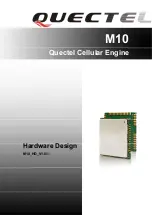
2
44
4. Attach RED (2) and BLACK (1) test lead probes
to the YELLOW wire (4) AC output terminals (6),
of the connector (3), as shown in
Fig.
31
. (Meter
test clip leads may be attached to either AC out-
put terminal.)
5. If
NO
or
LOW
output is found check for bare
wires or other defects. If shorted leads are not
visible, replace the stator.
6. With the engine running at
3600 RPM
output
should be
no less than 26 Volts
.
Fig. 31
DC Output Charging Wire Test
A simple test can be used to test the DC output
charging wire circuit. If a wiring problem exists it can
be corrected before testing regulator-rectifier.
Leave stator wire harness disconnected from
regulator-rectifier.
Equipment key switch must be in OFF position.
1. Insert RED test lead into
V
receptacle in meter.
2. Insert BLACK test lead into
COM
receptacle.
3. Rotate selector to
V==
(DC volts) position.
4. Attach RED test lead probe (2) to the RED wire
(5) DC output terminal (7), of the connector,
Fig. 31
.
5. Attach BLACK test lead probe (1) to negative
battery terminal.
6. Turn equipment key switch to ON position.
Meter should display
BATTERY VOLTAGE
.
7. If meter does not display battery voltage, check
for blown fuse or broken or shorted wires.
Regulator-Rectifier Test
Tools Required:
DC Shunt #
19359
The DC Shunt
must
be installed on the NEGATIVE
(-) terminal of the battery,
Fig. 32
to avoid blowing the
fuse in the meter when testing the output of the 20
amp system. All connections must be clean and tight
for correct readings.
1. Connect stator wire harness to
regulator-rectifier.
2. Install DC shunt #
19359
(4) on NEGATIVE
battery terminal.
3. Insert RED test lead into
V
receptacle in meter
and connect to RED post terminal on shunt (5),
Fig. 32
.
4. Insert BLACK test lead into
COM
receptacle in
meter. Connect to BLACK post terminal on
shunt (3).
5. Rotate selector to
300mV
position.
6. With the engine running at
3600 RPM
, the output
should be
3-20 Amps
.
NOTE:
Depending upon battery voltage and/or
current draw on system.
If
NO
or
LOW
output is found, be sure that
regulator-rectifier is grounded properly and all
equipment connections are clean and secure. If
there is still
NO
or
LOW
output, replace the
regulator-rectifier.
Fig. 32
















































